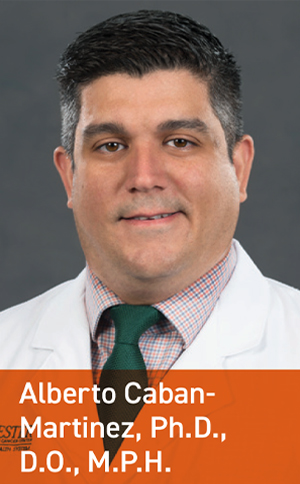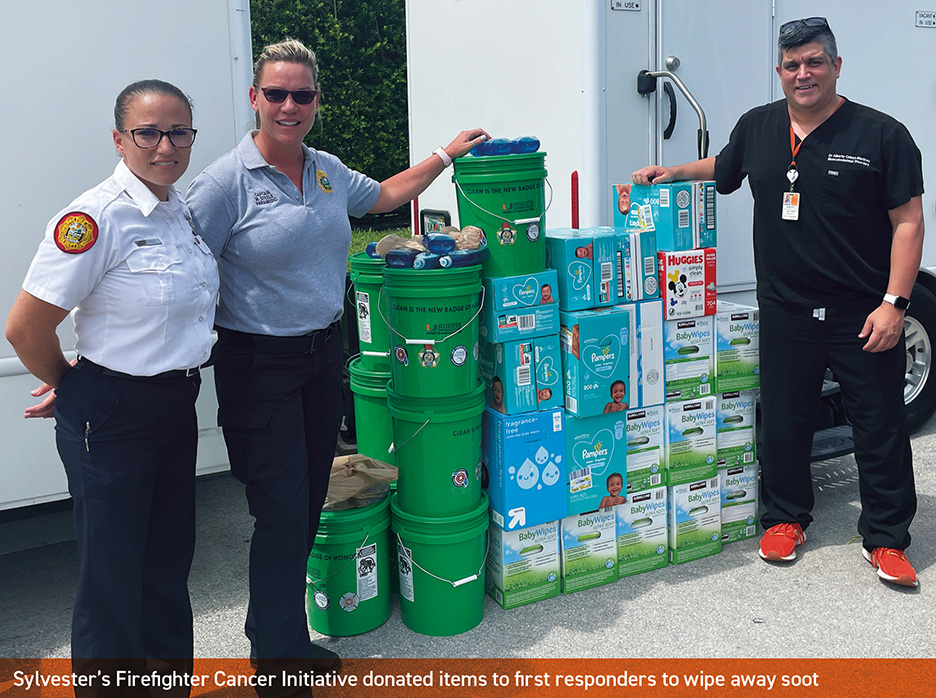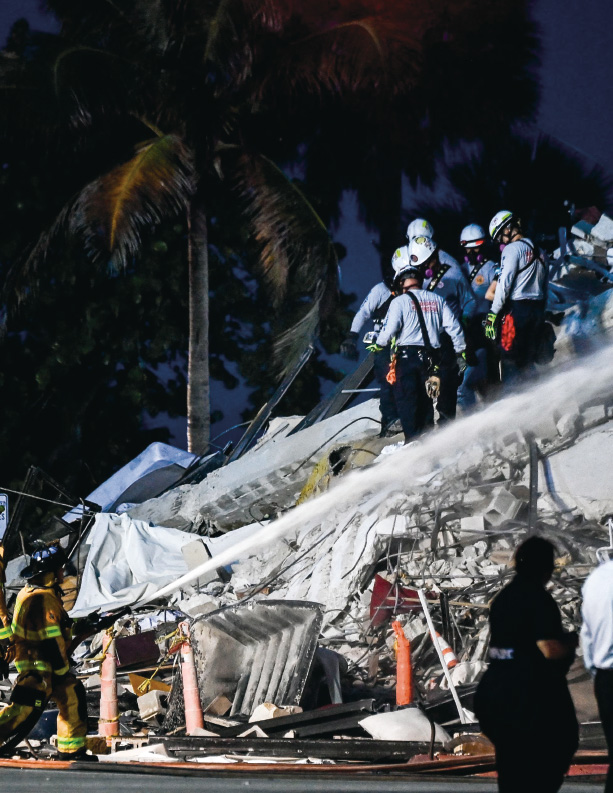
After the 12-story Champlain Towers South building suddenly crumbled in Surfside last June, Sylvester’s Firefighter Cancer Initiative stepped up to protect rescue workers from health hazards.
“Prevention is key,” said Alberto Caban-Martinez, Ph.D., D.O., M.P.H., deputy director of the FCI. “You do not want to be marinating in these compounds that are circulating in the air.” Within hours, Dr. Caban-Martinez was on the scene, delivering thousands of baby wipes and a dozen decontamination kits for search and rescue personnel.
Soon after, FCI founding director Erin Kobetz, Ph.D., M.P.H, ordered hundreds of air-filtering P-100 respiratory masks to replenish the supply at the collapse site.

Turning an unthinkable tragedy into a valuable learning opportunity, Drs. Kobetz and Caban-Martinez launched an environmental and exposure monitoring program that not only kept first responders safer on the ground but will inform future guidelines for protecting them fromanother occupational hazard likely to add to their risk profile. Conducted in partnership with Miami-Dade Fire Rescue and the Department of Science and Research at the International Association of Fire Fighters, the study found that rescue workers were exposed to high concentrations of polyaromatic hydrocarbons, a massive class of known and probable carcinogens.
Dr. Caban Martinez, who is also an associate professor of public health sciences at the Miller School, also launched SAFE — for the Surfside Assessment of First-Responder Exposures study — which aims to collect two years’ worth of toenail clippings from hundreds of firefighters who worked on the debris pile. 
“I'm always thinking about firefighters— like what they were doing after Hurricane Ida hit the Gulf Coast, what we could do to protect them from things like water contamination and infection,” he said. “Because we know they will do whatever it takes to do their job, which is saving lives without considering the repercussions. But it’s our job to make sure they know how to protect themselves from hazards and reduce their risks.”
“Given the aftermath of 9/11, we all assumed that when this type of major incident takes place, some sort of government environmental monitoring program would automatically go into play. But, after a couple of days, it became clear that was not the case, so knowing this was Miami, Alberto Caban-Martinez and Erin Kobetz were my first two phone calls.”